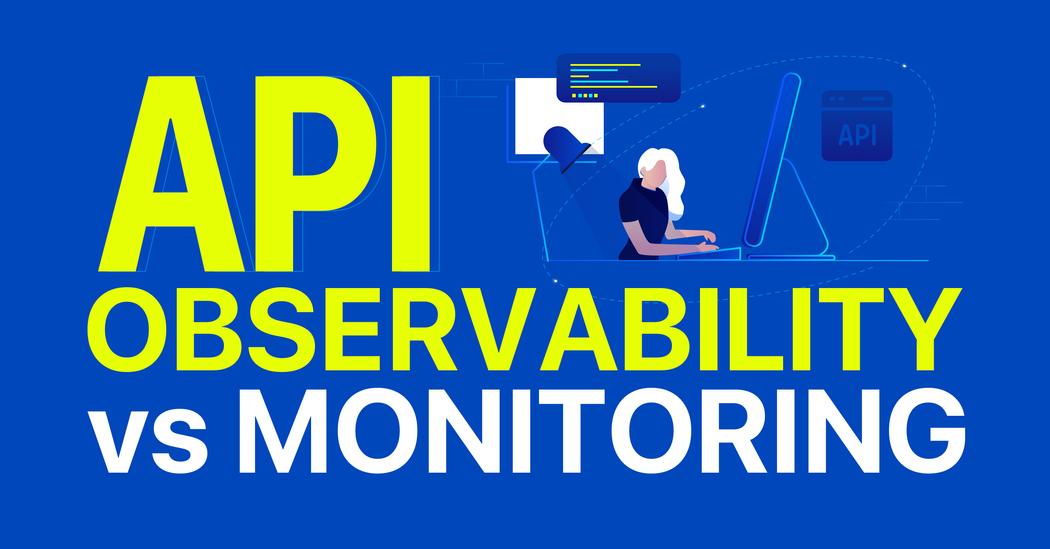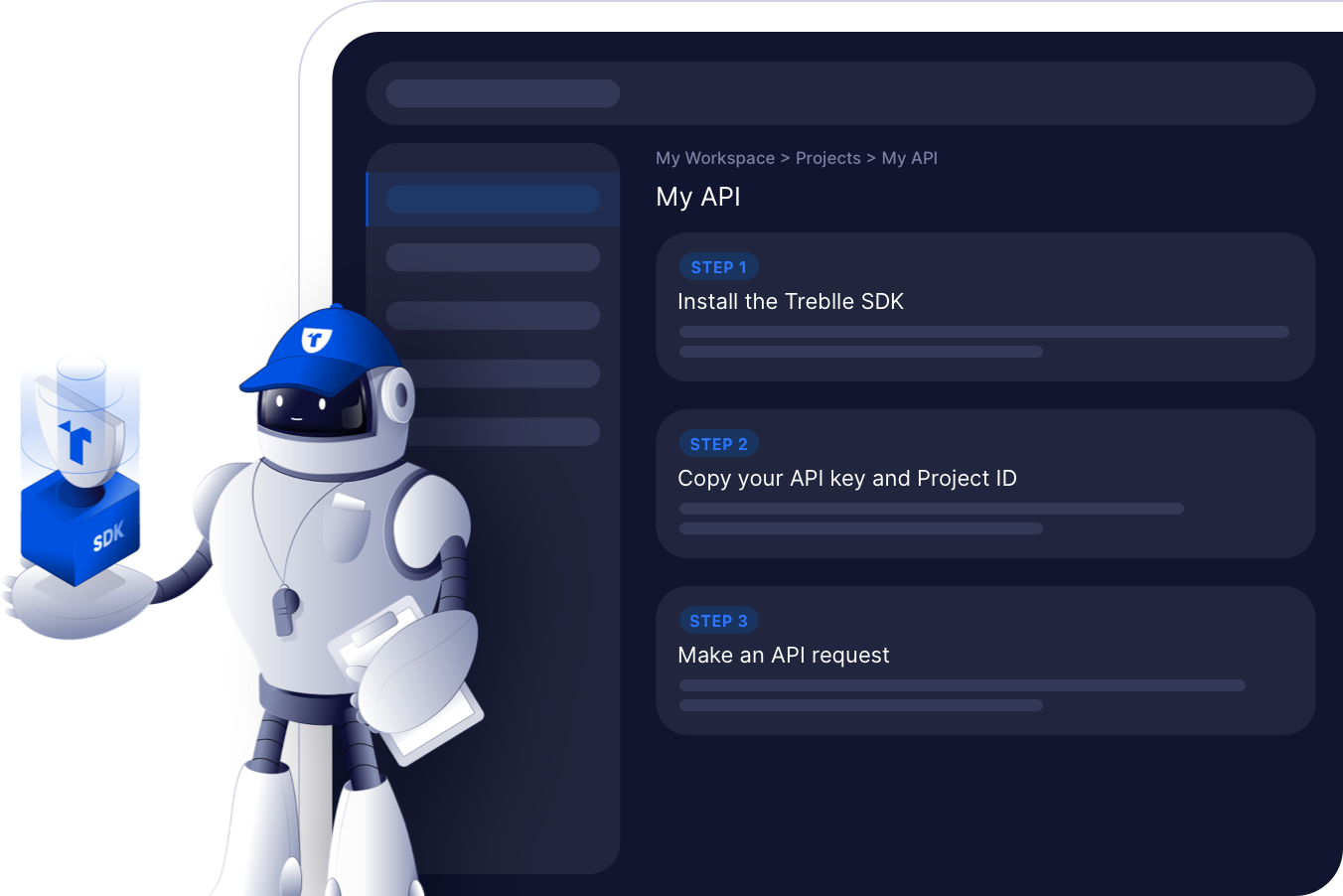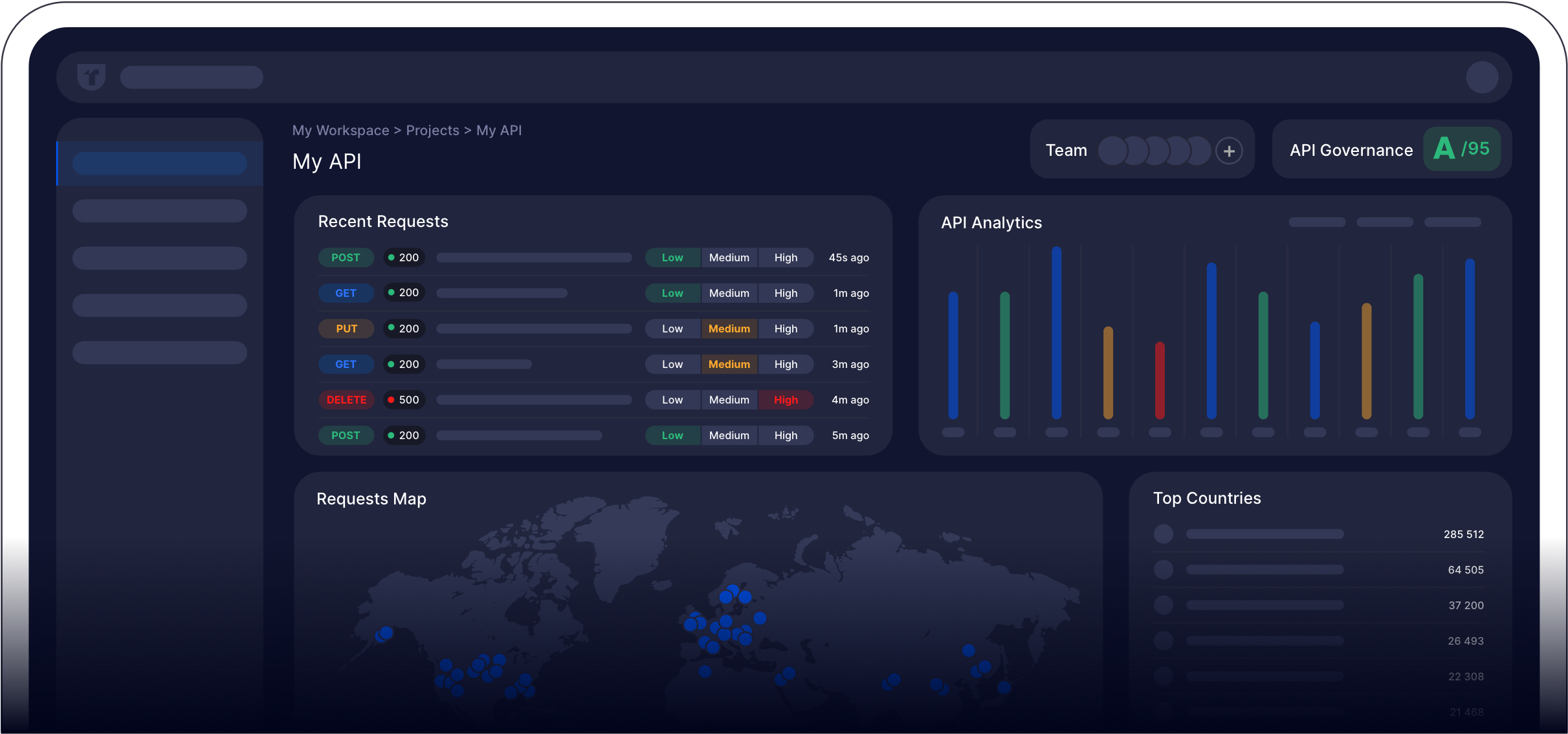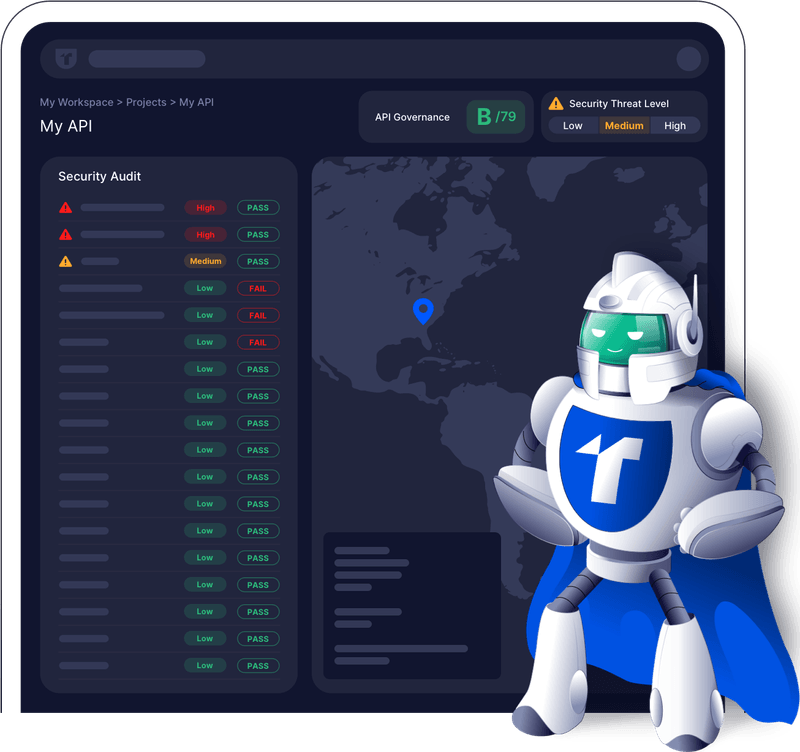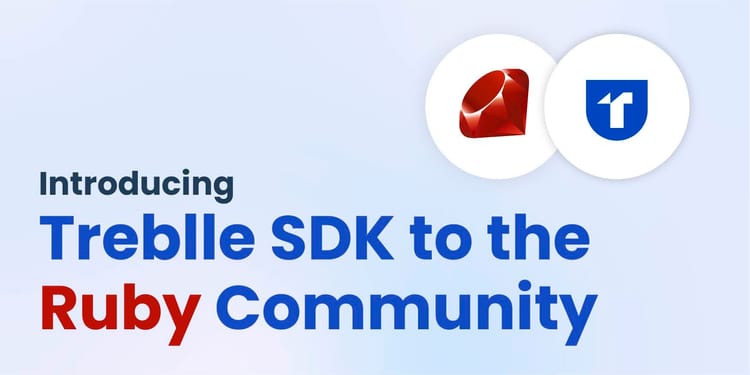APIs reign supreme as the ultimate conduits of connectivity and data exchange. As businesses increasingly rely on them to power their applications, ensuring peak performance, availability, and reliability has become an unwavering imperative. Enter API monitoring and API observability — two powerful practices that hold the key to unlocking the hidden secrets of your API systems.
In this article, we’ll dive into the world of API monitoring and API observability, shedding light on their distinctive purposes. Let’s demystify these differences and equip you with the knowledge to make informed decisions for your API-driven applications.
What is API Monitoring and API Observability?
While the two are incredibly similar — and often overlap — they are two different aspects of software development and API management. Let’s give you a quick overview of each of them:
API Monitoring
API monitoring is the process of collecting and analyzing data relating to the performance of your API. Monitoring APIs help businesses get access to real-time insights on the health of their API and its usage and lets them spot issues before they impact users.
By monitoring your API's performance, you gain access to a wealth of information to show you exactly how healthy it is. It allows you to track key metrics like Requests Per Minute, latency, failure rate, and CPU/memory usage. These all can help paint a complete picture of your API's overall health and performance.
However, this method doesn’t provide you with anything more than surface-level information. API monitoring can illustrate how your API performs at this time and some historical data, but it doesn’t delve any deeper. If you want a deeper look into how your APIs perform as a whole and interact with other parts of your system, you’ll need to look at API observability.
API Observability
API Observability is a practice that focuses on gaining deep insights into the performance and behavior of APIs and the systems they interact with. Instead of the surface-level data that API monitoring provides, API observability aims to provide deeper insights and a comprehensive understanding of how their APIs exist in the world.
With API observability, teams can paint a broad picture of their API's performance, down to granular details or in a broader scope. It relies on data collection to get the job done — deep diving into your API scan every log, event, metadata, and the context around them. This allows devs to understand the complete sequence of events from start to finish and understand the system’s behavior.
You may realize that API observability is all big-picture stuff — things that teams will want to look at and analyze over time, not just for single incidents or day-to-day stuff. This means if your teams need to be able to look at how your APIs perform at a glance, they’ll want to look into monitoring tools instead.

Comparing API Observability and API Monitoring
As you can tell, the lines are quite blurry when you look at how these two concepts work. The Venn Diagram between these two is not quite a circle, but it’s definitely got a lot of overlap. So to show you how it all breaks down, let’s cover some of the biggest overlaps between them.
Purpose and Scope
The primary purpose of API monitoring is to track the operational health of an API in real time. It focuses on gathering data about API performance, responsiveness, and availability. It provides a reactive approach that developers can use when certain thresholds are reached and only tracks specific metrics and indicators.
On the other hand, API observability goes beyond just monitoring, aiming to provide a comprehensive understanding of how the API behaves and performs. It aims to collect granular data, allowing teams to analyze and troubleshoot more complex issues.
Data Collection
When it comes to data collection, both of these methods approach the subject differently. API monitoring collects predefined metrics like response time, status codes, and error rates directly from API endpoints. The data collected here directly focuses on specific facets of overall API performance.

API observability, however, emphasizes collecting all kinds of data, mainly less structured and requires more careful analysis. Collecting information from logs, metadata, and traces offers a more comprehensive look into the context of events on your API and how it interacts with the rest of your system.
Insights and Analytics
With all the data collected by these two methods, they’ll use them differently to achieve their own end results. API monitoring focuses on the health of your API at the current time but doesn’t look back historically. The insights from your typical API monitoring tool will typically only help identify immediate issues or any deviations in performance based on pre-defined metrics. They also tend to only monitor API endpoints, not the whole system itself.
Instead of looking at the now, API observability looks at the entire picture of your API's behavior. It enables devs to analyze the flow of requests, dependencies, and interactions between the different components of your system. With API observability tools, you can get a more holistic view, which helps with root cause analysis and performance observation.
Choosing the Right Approach
As you can tell, these methods are similar on paper but have much broader uses when you look up closely. However, when looking to add one (or both) to your system, there are some things you should consider when picking between them.

You should choose API monitoring tools when:
- Real-time information is enough. If your teams only need real-time visibility into the performance of your API endpoints, these tools are sufficient.
- Reactively resolving issues is fine. API monitoring focuses on providing alerts when problems are already happening, allowing your team to respond. If you already have comprehensive metrics to track and you’re only concerned with incident responsiveness, monitoring is for you.
- You have limited resources. If your APIs are relatively simple, or you only have limited resources, API monitoring may be enough for your needs without spending too much on observation.
- You like metrics and KPIs. Setting up metrics can illustrate your API’s performance without getting too deep into the details. If you don’t need to drill down to the minute details of your API, API monitoring tools will be enough.
On the other hand, you should look into API observability tools when:
- You have a complex architecture. More complex APIs with microservices, dependencies, and interactions will benefit significantly from these tools. They help your dev team understand the relationships between components and troubleshoot system-wide issues.
- You want to be proactive. If you need to closely monitor your API’s performance and respond before there’s an issue, observability tools will get you there. They allow for real-time exploration of your system and aid in root cause analysis.
- You want comprehensive insights. API observability tools can give you detailed information beyond standard metrics, such as understanding the flow of requests, tracing individual transactions, and analyzing logs for detailed context.
- Continuous improvement and scalability are a priority. If your organization values a culture of continuous improvement, API observability provides valuable feedback that can be used to optimize APIs and other components iteratively. API observability can also help ensure your system scales and performs optimally under varying loads and conditions.
Curtain Call on API Tooling
In the dynamic world of modern software development, APIs have become the backbone of many applications, facilitating seamless communication and data exchange. The choice between API monitoring and API observability hinges on specific use cases and requirements: API monitoring is ideal for real-time visibility and immediate issue detection in simpler systems, while API observability is the preferred option for gaining comprehensive insights, proactive troubleshooting, and continuous improvement in more complex and critical API environments.

Teams can effectively manage and optimize their API-driven applications by combining real-time monitoring insights with in-depth observability analysis. This enables devs and ops teams to work together, fostering a culture of continuous improvement and delivering reliable, performant, and resilient API systems that meet the demands of today's landscape.
When it comes to tooling for API observability and monitoring, you have a myriad of options available. Tools range from simply helping you explore your endpoints, offering detailed dashboards of your entire API, and giving you concrete data across metrics and data points so you won't miss a thing. And if you need a tool that can do all of that and more, Treblle is for you.
API Observability vs. API Monitoring FAQ
What is the difference between API Observability and API Monitoring?
API Observability and API Monitoring are two distinct aspects of software development and API management. API Monitoring focuses on collecting real-time data about API performance and usage, while API Observability aims to provide deeper insights into the behavior of APIs and the systems they interact with.
What does API Monitoring involve?
API Monitoring involves the process of analyzing data related to API performance, such as Requests Per Minute, latency, failure rate, and CPU/memory usage. It helps businesses gain real-time insights on the health of their APIs and spot issues before they affect users.
How does API Observability differ from API Monitoring?
API Observability goes beyond monitoring and aims to gain a comprehensive understanding of how APIs behave. It collects granular data from logs, events, metadata, and traces, enabling a broader view of the API's performance and interactions with the system.
What are the benefits of API Observability tools?
API Observability tools provide detailed information beyond standard metrics, allowing you to understand the flow of requests, trace individual transactions, and analyze logs for context. They are valuable for troubleshooting complex issues and achieving continuous improvement and scalability in API-driven applications.

